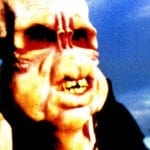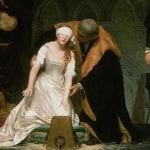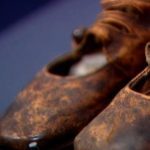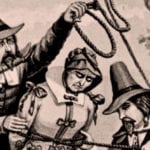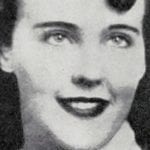 Our World
Our World  Our World
Our World  Pop Culture
Pop Culture 10 Incredible Female Comic Book Artists
 Crime
Crime 10 Terrifying Serial Killers from Centuries Ago
 Technology
Technology 10 Hilariously Over-Engineered Solutions to Simple Problems
 Miscellaneous
Miscellaneous 10 Ironic News Stories Straight out of an Alanis Morissette Song
 Politics
Politics 10 Lesser-Known Far-Right Groups of the 21st Century
 History
History Ten Revealing Facts about Daily Domestic Life in the Old West
 Weird Stuff
Weird Stuff 10 Everyday Products Surprisingly Made by Inmates
 Movies and TV
Movies and TV 10 Actors Dragged out of Retirement for One Key Role
 Creepy
Creepy 10 Lesser-Known Shapeshifter Legends from Around the World
 Our World
Our World 10 Science Facts That Will Change How You Look at the World
 Pop Culture
Pop Culture 10 Incredible Female Comic Book Artists
 Crime
Crime 10 Terrifying Serial Killers from Centuries Ago
Who's Behind Listverse?

Jamie Frater
Head Editor
Jamie founded Listverse due to an insatiable desire to share fascinating, obscure, and bizarre facts. He has been a guest speaker on numerous national radio and television stations and is a five time published author.
More About Us Technology
Technology 10 Hilariously Over-Engineered Solutions to Simple Problems
 Miscellaneous
Miscellaneous 10 Ironic News Stories Straight out of an Alanis Morissette Song
 Politics
Politics 10 Lesser-Known Far-Right Groups of the 21st Century
 History
History Ten Revealing Facts about Daily Domestic Life in the Old West
 Weird Stuff
Weird Stuff 10 Everyday Products Surprisingly Made by Inmates
 Movies and TV
Movies and TV 10 Actors Dragged out of Retirement for One Key Role
 Creepy
Creepy 10 Lesser-Known Shapeshifter Legends from Around the World
Ten (Sometimes Tragic) Stories of Underappreciated Women of Rock
Showbiz is an industry that is notorious for chewing people up and spitting them out or forgetting them altogether. But it also has a tendency to put women through the wringer far more than it does men. So here are ten of the women rock history left out who you really should listen to. They all deserve their due.
Related: 10 Groupies That Majorly Impacted The History Of Rock ‘N’ Roll
10 Poly Styrene
Some artists make an impression the moment they hit the scene and cast a long shadow over pop culture despite having very short careers or small bodies of work. If you listen to Live at the Roxy WC2, the legendary documentary of England’s punk scene in its early days, you’ll hear what was X-Ray Spex’s second live performance ever. The band was fronted by Marianne Joan Elliott-Said, also known as Poly Styrene, and the show was electrifying. X-Ray Spex were proud underachievers who only made one album during punk’s heyday (and another comeback album in the ’90s), but bi-racial Poly, who dressed in day-glo with braces on her teeth, had a voice that could drill through sheet metal. She was unforgettable in the nihilistic, male-dominated punk scene.
On the surface, Poly’s story sounds tragic and mysterious—even a little disturbing. In one of the most repeated anecdotes about her, she shaved her head after the Sex Pistols’ Sid Vicious threatened her with a scythe. About the incident, she’d only say that “I’d read that girls in concentration camps did that after being raped by the Nazis… You do it to be cleansed,” refusing to expand.
She did tell NME in 1978 that “You know, I said that I wasn’t a sex symbol and that if anybody tried to make me one, I’d shave my head…” After retreating from punk, she joined the Hare Krishna movement. However, she fled due to reports of pedophilia in the sect and “attempts to marry her off.” But Poly was not the hermit you’d expect, being active in the arts until her death from breast cancer in 2011. In life, Poly refused to be defined by tragedy.[1]
9 Meg White
Given that they were a two-person band, it would be tempting to think of The White Stripes’ singer, songwriter, and guitarist Jack White as the creative force behind the band and think of drummer Meg White simply as “the other one.” But let’s be real, despite Jack’s polymathy, Meg was The White Stripes. She casts a shadow that Jack, in his solo career, just can’t escape; he’s asked about her in every interview he gives.
Moments before taking the stage at a show in Southaven, Mississippi, in 2007, Meg unexpectedly told the band’s archivist that this would be The White Stripes’ last ever concert. It was. The rest of the tour was canceled; the reason given: Meg’s acute anxiety.
We’ve come a long way in our understanding of mental health, but society’s attitude to mental health is still problematic. Ongoing struggles are too bleak to countenance; we want a recovery narrative. When a celebrity retreats from the spotlight due to mental health issues, our support and sympathy are contingent on a quick comeback with an album or a tell-all memoir about their triumphant recovery. Meg White has not made a public appearance since 2010 and is not on social media. Despite intense public curiosity, one-half of the noughties’ most influential rock bands has disappeared completely, presumably to somewhere happier, and I can’t think of anything braver.[2]
8 Sister Rosetta Tharpe
The Rock’ n’ Roll Hall of Fame is a very strange and problematic institution, but say this for them, they made Sister Rosetta Tharpe a household name when they inducted her in the early influencers category in 2018, over 100 years after she was born. Rosetta Tharpe died in 1973 and did not even have a headstone on her grave until 2009. This was despite being the first gospel singer to cross over into the R&B charts (this was so long ago, the Billboard R&B chart was referred to as the “race records”) and being cited as an influence by Elvis Presley, Jerry Lee Lewis, Little Richard, and Bob Dylan.
So many different figures are called the “inventor” of rock ‘n’ roll that the term is meaningless, but I would argue that Rosetta Tharpe deserves the title. It’s easy to think of rock ‘n’ roll as having sprung forth fully formed from the Sun Records studio somewhere around 1952. As much as we all know intellectually that rock ‘n’ roll evolved from earlier R&B and gospel, it’s sometimes hard to hear the link. Trust me when I say that Sister Rosetta Tharpe was the missing link—the true first rock star! Her 1938 hit “This Train” is one of the first recordings to feature heavy distortion on the electric guitar; her guitar playing was startlingly ahead of its time and sounded like nothing that should have come from the 1930s.[3]
7 Karen Dalton
Speaking of those who influenced Bob Dylan, Dylan’s memoir Chronicles Volume 1 may well be the first time many people ever heard of Karen Dalton. A passing but glowing mention. “My favorite singer in the place was Karen Dalton. She was a tall, white blues singer and guitar player—funky, lanky, and sultry. Karen had a voice like Billie Holiday’s and played guitar like Jimmy Reed, and went all the way with it.” But anyone inspired by this Dylan connection to look her up would find a disturbing parallel between the two folk troubadours.
Listening to Dalton, one thing strikes you: her voice. The comparison to Billie Holiday is accurate, but unlike Holiday, Dalton’s voice is worn and cracked, a quality that imbues every syllable with portent and emotion. That’s sometimes hard to listen to, just like Bob Dylan’s famous “voice like sand and glue.” But what Karen Dalton had to offer never caught on. Another supposed reason for her lack of success was her inability to compromise or play the part of an entertainer. At one point, she was in talks to form a group with John Phillips, but her need for control, as well as her purist view of folk, led him to seek other singers, with whom he’d form The Mamas and the Papas. In other words, a raspy confrontational voice and an uncompromising artistic outlook were an asset to one ’60s Greenwich Village folk singer and the ruination of another.
Karen Dalton passed away in 1993 from AIDS while living in a mobile home, poetically in Woodstock, New York. Her daughter believes she contracted AIDS from sharing needles. A fire then destroyed hundreds of tapes of demos and rehearsals, leaving us with just two breathtaking albums.[4]
6 Nico
The name Nico appears on the cover of one of the most influential albums in rock history, yet the woman herself is a mystery. We all know her face from publicity shots of the Velvet Underground circa 1967, her white suit standing out coolly against the rest of the group’s uniform black. Yet, even though she’s an indelible part of the band’s image, the band’s history barely mentions her, as she only sang four of the songs on their first album. Her partnership with The Velvet Underground was a marriage of convenience. Andy Warhol was obsessed with The Velvet Underground but found Lou Reed lacking as a frontman, while the band wanted Warhol’s stamp of approval. Thus, a role was there to be filled by a pretty face.
Christa Päffgen began modeling in 1953 at the age of 15 and was dubbed Nico by a photographer at around the same time. Biographer Jennifer Otter Bickerdike recalls that she asked “over 100 people” if they’d ever heard her say “call me Christa,” and apparently, no one had. In 1988 when she passed away, the German daily newspaper Berliner Zeitung reported it with a headline referencing her affair with French heartthrob Alain Delon. Nico was a role that consumed Christa Päffgen, reducing her to said role, an assumed identity defined by others.
In contrast, Nico’s solo music career, while never successful, has the air of authentic expression. Someone playing a role defined by others would never have produced anything as unceasingly gloomy and dark as Nico’s solo records. And given the anecdotes about her violent (and racist) tendencies, we know that the darkness of those records came from deep within.[5]
5 Jackie Fox
Reading about the first fateful meeting between Jackie Fox (then Fuchs) of The Runaways and the band’s manager, Kim Fowley, in her 2015 interview with Huffington Post, one’s stomach churns. At the point where a fifteen-year-old Fuchs is brought to Fowley’s disheveled pill-strewn apartment to hear his stream-of-consciousness rant about an all-teenage girl hard rock band, you know there’s no way any of this could end wellLink10. It’s perversely surprising that we’re only talking about one incident here. Though in light of the allegations that Jackie Fuchs made against Fowley, many others came forward with similar allegations.
Troublingly, they also came forward with corroboration of Fuch’s account. In 2015, after Kim Fowley’s death, Fuchs alleged that Fowley had raped her at a New Years Eve party in 1975 in front of bystanders and witnesses, including bandmates Cherie Currie, Joan Jett, and Kari Krome. Krome and Currie have differing accounts of what happened (Krome claims she saw Jett and Currie watching and snickering, while Currie claims she spoke up, then stormed out). However, both confirm that a teenager was raped, in front of witnesses, by a man who remained free until his death forty years later. Crucially, Joan Jett denies witnessing the incident.
Jackie Fuchs is now an attorney. In 2013 she appeared on game shows The Chase and Who Wants to Be a Millionaire. And in 2018, she was on Jeopardy, winning four nights and $87,089.[6]
4 Kate Schellenbach
In listicles of songs that fans miss the point of, the Beastie Boys’ “(You Gotta) Fight for Your Right (To Party!)” is typically number one with a bullet. Frequently taken as a big dumb song about drinking and partying, the song was actually intended as a parody of big dumb songs about partying and drinking. But looking at the Beastie Boys’ early career, one must question if claiming it was a parody was just a cover—an excuse to release a big dumb song about partying and drinking while still appearing to be above doing so. The Beastie Boys’ early days were torn between notions of punk authenticity and an emerging frat bro image. In 1981, the Beastie Boys were a hardcore punk band with a female drummer. However, as the group gravitated toward hip-hop and a macho bravado aesthetic, there was no room for drummer Kate Schellenbach. As Adam Horovitz (aka Ad-Rock) said:
“Sloppy drunk dudes trying to creep on young women was repugnant to punks in ’81. Unfortunately, when you’re a straight guy in your late teens/early twenties, you can easily fall into the stereotype’s own trappings. And we fell in. Like, from the high diving board. We got so caught up with making fun of that rock-star persona that we became that persona. Became what we hated. It got so bad we kicked Kate out of the band because she didn’t fit into our new tough-rapper-guy identity. How f**ked up is that!?!”
Kate Schellenbach founded the band Luscious Jackson and is a successful TV producer.[7]
3 D’arcy Wretzky
When D’arcy Wretzky left The Smashing Pumpkins in 1999, it pretty much initiated the beginning of the band’s end. Soon after, the band entered a period in which Billy Corgan was the only original member, and most fans stopped paying attention. So, Billy Corgan clearly had a vested interest in making the 2018 reunion of the original line-up a success, or at least in absolving himself of the blame for its failure.
When the reunion was first announced, original bass-player Wretzky was left out, with the simple explanation from Corgan that she had refused to take part. Except Wretzky then produced text messages showing that Corgan had asked her to be a part of the reunion, then rescinded the offer. That was only the beginning of the ugliness. Wretzky then gave an interview in which she discussed his narcissistic controlling ways. Corgan’s final missive in the war of words takes the cake, though.
Corgan’s longtime friend, the unbelievably named DJ Mancow, leaked a picture of Wretzky taken by the police after she’d been assaulted, implying that her horrific state shown in the photo was due to drug use. D’arcy Wretzky has been very open about her addiction issues, and Mancow took advantage to allow Billy Corgan to control the narrative. Suddenly the video for “Try, Try, Try” makes a lot more sense.[8]
2 Clare Torrey
Clare Torry’s voice is the centerpiece of one of classic rock’s most famous documents. “The Great Gig in the Sky” closes side one of Pink Floyd’s Dark Side of the Moon. On an album that itself is a singular achievement, “The Great Gig in the Sky” sounds like nothing else in the rock canon. It’s a song comprised of non-lexical vocables. In other words, vocal sounds that aren’t words but eerie, evocative, and unforgettable sounds that say far more than any lyrics could. Clare Torry’s performance on the track makes Dark Side of the Moon more than just a collection of songs.
The vocal performance was improvised, meaning she was more than a singer for hire. She’s basically responsible for the song. However, she was paid £30 for a night’s work (and only that much because it was double time on a Sunday) and was left with the impression that her performance would not make it onto the final album. Meanwhile, Dark Side of the Moon went on to be one of the best-selling albums of all time and remained on Billboard’s Top 200 chart for a record-breaking 26 years. It wasn’t until 2005 after she had retired, that Torry pursued fairer recompense in a court case that Pink Floyd, to their credit, did not contest. Details of the case were sealed, but copies of Dark Side of the Moon printed after 2005 list Torry as a co-writer, as they should’ve always done.
In 2018, Alice Glass of the Indie Band Crystal Castles came forward with abuse allegations against bandmate Ethan Katz. Katz had claimed that her improvised vocals on their 2006 hit “Alice Practice” was merely a mic test he’d recorded (hence the title), a claim intended to diminish her contributionslink19. What these cases have in common is the theory that a woman’s improvisation does not constitute songwriting.[9]
1 Natasha Shneider
In 1976, 20-year-old Natasha Shneider defected from the USSR to the West and arrived in New York City with no money or connections. Her son was born just two months later. In 1978, she met Berry Gordy and was signed to Motown records as part of an R&B group called Black Russian. In 1984, she starred in 2010: The Year We Make Contact, a little-remembered but beloved (by me, no one else) sequel to 2001: A Space Odyssey. In 1999, she co-produced and co-wrote songs for Euphoria Morning, the solo debut from Chris Cornell of Soundgarden. And in 2006, she was a member of the hard rock outfit Queens of the Stone Age.
Even a dry accounting of a handful of Natasha Shneider’s achievements is ridiculously compelling. The throughline to her Zelig-like career was Eleven, a band that she formed in 1987 with Jack Irons of Pearl Jam and her husband Alain Johannes. which made a few small dents in the Billboard charts during the 1990s and 2000s. Sadly she passed away from breast cancer in 2008. After her passing, Chris Cornell took to performing his song “When I’m Down,” accompanied only by a vinyl record of Shneider on piano, the analog technology eerily conjuring her presence.[10]
